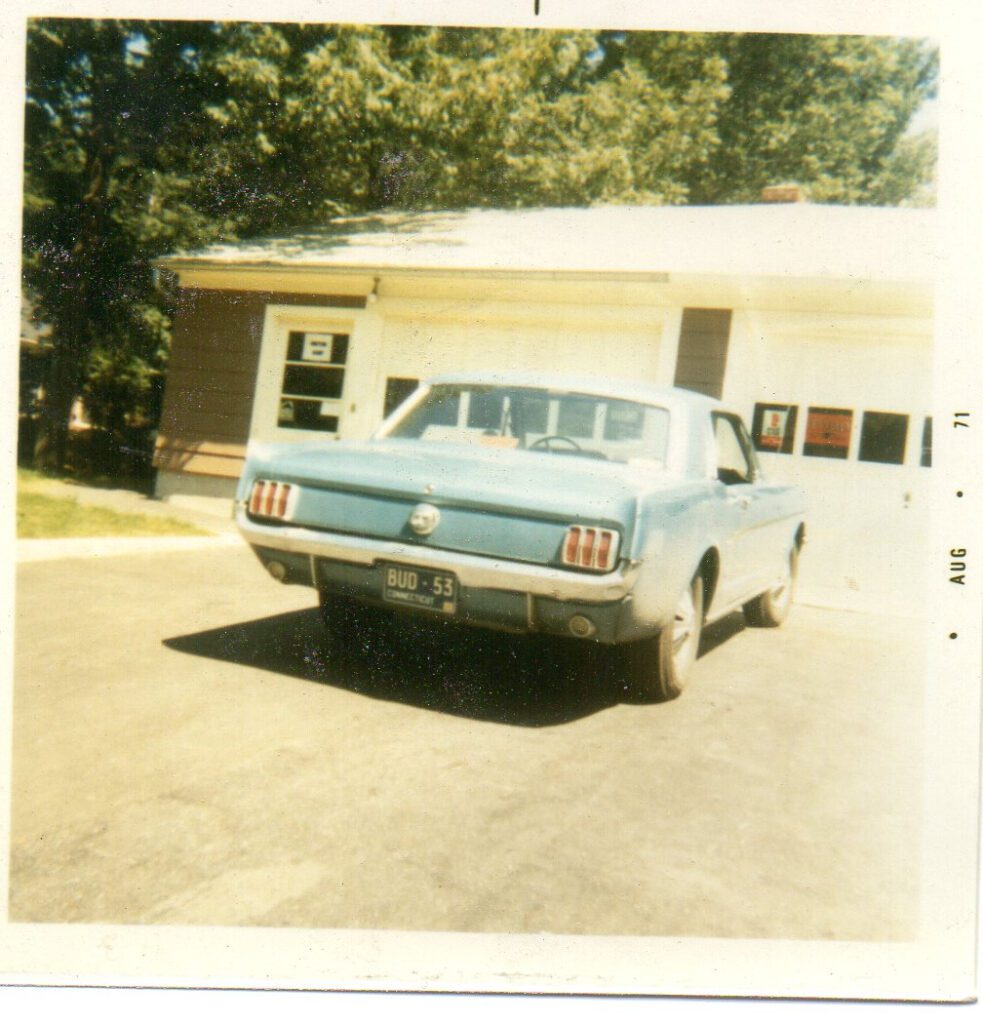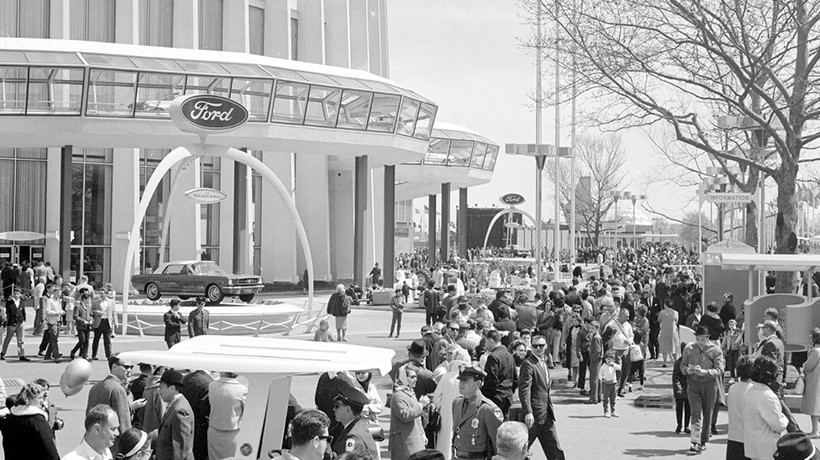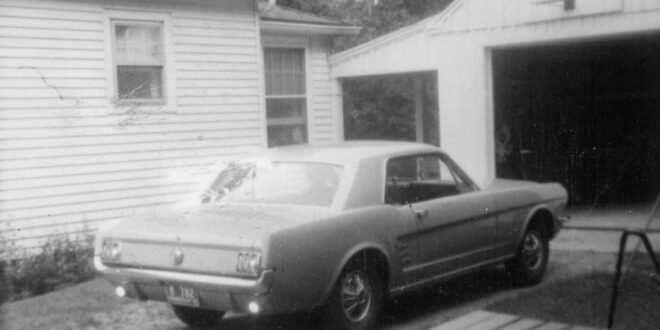HARWINTON, CT – It’s a memory that cannot be erased; a memory of being 12 or 13 years old, accompanying my parents to Crestwood Ford in Watertown, CT, and riding home with mom in a new light gray 1966 Ford Mustang. It was a base model, with a 200-cubic-inch six-cylinder engine and three-speed manual transmission. The shifter was on the floor between two sporty bucket seats.
So basic was this Mustang that it lacked a radio, although one got added by the time I turned 16 years old and got to drive it. I was still in prep school, perhaps in the summer of 1970, when I took it to Vermont and accidentally backed it into a pine tree. The Mustang got fixed and the color changed to a more exciting electric blue.

I may have learned to drive on 1956 Chevies – mom drove a two-tone ’56 station wagon while dad had a ’56 business coupe in black – but it was the Mustang that really introduced me to driving. Notice the personalized plate in the above picture? I got it to emulate friend Tom Zarecki who had “TOM – 52” on his car at the time. The numbers signified our years of birth.
With today marking 60 years since the iconic model’s debut, here are some historical facts worth recycling:

Mustang’s Flashy Debut
While the model name was revealed in a press release on Feb. 6, 1964, the 1964½ Ford Mustang wasn’t unveiled to the public until April 17, 1964 at New York’s World’s Fair in Queens. It was a sporty coupe available in hardtop, fastback and convertible.
The reveal took place at the Ford Pavilion, known as the Wonder Rotunda. Visitors to the World’s Fair “could ride in an all-new Mustang convertible on the Magic Skyway ride. This ride was designed by Walt Disney and his staff to be ‘a fantasyland of the past, present and future.’ The convertible would take visitors through a nearly half-mile, twelve-minute ride depicting ‘millions of years of life on Earth.’ The almost 15 million visitors who took the ride were thus able to inspect the Mustang’s interiors and familiarize themselves with its many available options and accessories.”
Mustang Was A Name Well Chosen
While it’s hard to image a Mustang by any other name, other names were considered for the model. Among them were “Monte Carlo,” “Monaco,” “Torino” and “Cougar,” which was later used for sibling brand Mercury’s answer to the Mustang. Even “Bronco” and “Colt” got suggested.
It was the New York ad agency J. Walter Thompson that suggested “Mustang” because it “evoked open spaces, the American West and untamed freedom,” according to The Henry Ford museum.
The Mustang was a model conceived by then Ford executive Lee Iacocca, but it was another exec, Hal Sperlich, who suggested using a Ford Falcon chassis for the Mustang, which saved Ford hundreds of millions of dollars in development costs and made the model possible.

A Well-Planned Launch
The Mustang was an instant hit in 1964 thanks to brilliant marketing and youthful appeal. In addition to the splashy reveal at the World’s Fair, Ford ran ads for the model in 2,600 newspapers nationwide and ran TV ads the night before the launch on the “Big Three” networks.
Within four months, more than 100,000 Mustangs had been sold, with about 420,000 being sold in its first year. On March 2, 1966 – less than two years after its debut – the one millionth Mustang rolled off the assemble line in Dearborn, MI. Retail sales topped $2.8 billion.

Mustang Made A Lasting Impression
As I recall, my parents paid roughly $2,300 for the 1966 Mustang. I remember a sense of wonderment riding home the day of its purchase. While the Chevies had shifters on the steering column, the Mustang had a stick shift, which suggested speed and drivability. The car looked peppy standing still. It certainly changed my mom’s interest in driving as the Mustang eventually got replaced by an MGB convertible and, later, by a Datsun 240Z sports car.
The Mustang, which I saw in person for the first time at the World’s Fair like so many others, cemented my love of the model. And it certainly contributed to me buying a 1976 Mustang II and a 1999 Mustang convertible.
 RIDE-CT – Classic Cars Celebrating Classic Cars in Connecticut
RIDE-CT – Classic Cars Celebrating Classic Cars in Connecticut


